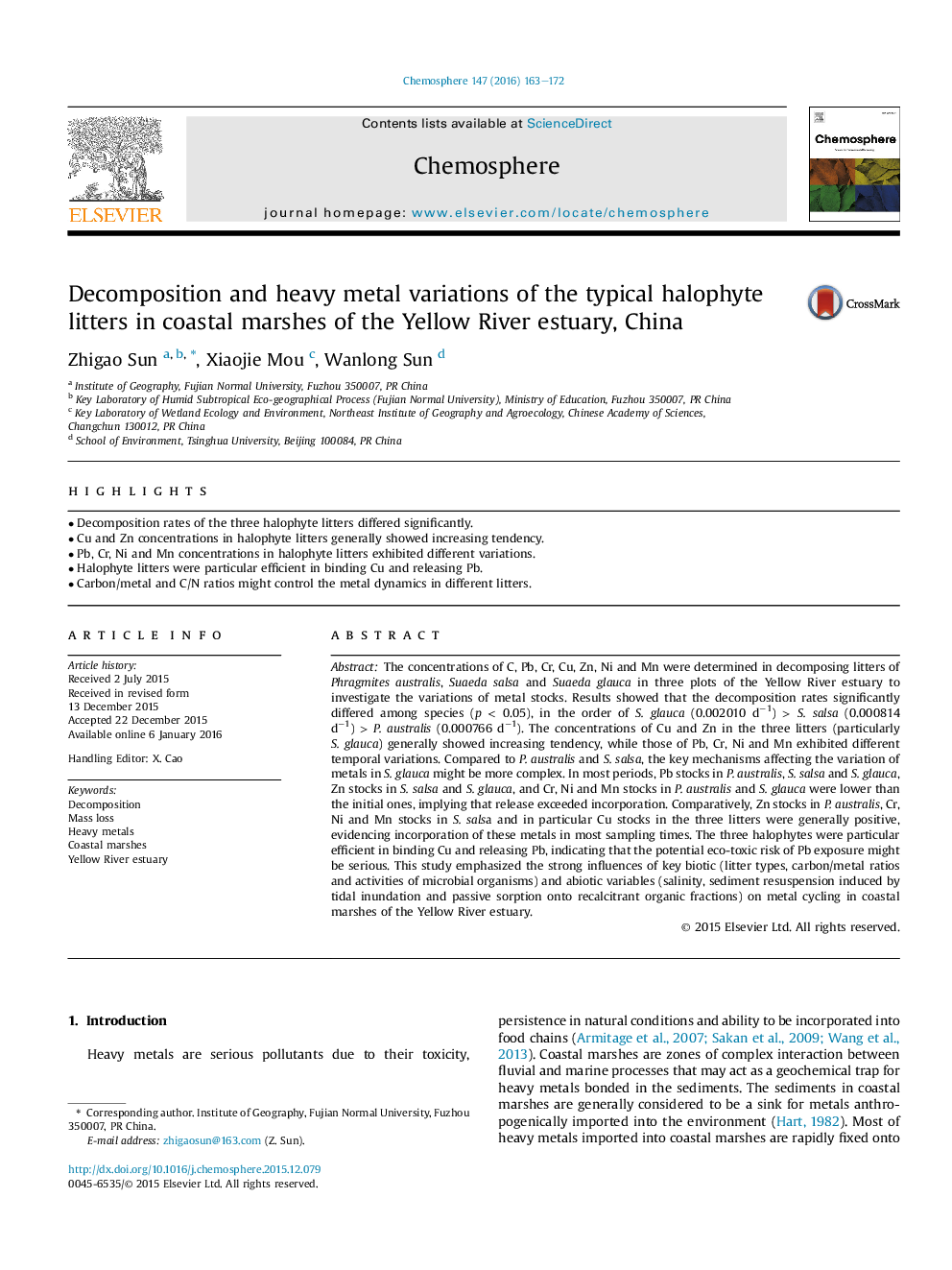| Article ID | Journal | Published Year | Pages | File Type |
|---|---|---|---|---|
| 4408011 | Chemosphere | 2016 | 10 Pages |
•Decomposition rates of the three halophyte litters differed significantly.•Cu and Zn concentrations in halophyte litters generally showed increasing tendency.•Pb, Cr, Ni and Mn concentrations in halophyte litters exhibited different variations.•Halophyte litters were particular efficient in binding Cu and releasing Pb.•Carbon/metal and C/N ratios might control the metal dynamics in different litters.
AbstractThe concentrations of C, Pb, Cr, Cu, Zn, Ni and Mn were determined in decomposing litters of Phragmites australis, Suaeda salsa and Suaeda glauca in three plots of the Yellow River estuary to investigate the variations of metal stocks. Results showed that the decomposition rates significantly differed among species (p < 0.05), in the order of S. glauca (0.002010 d−1) > S. salsa (0.000814 d−1) > P. australis (0.000766 d−1). The concentrations of Cu and Zn in the three litters (particularly S. glauca) generally showed increasing tendency, while those of Pb, Cr, Ni and Mn exhibited different temporal variations. Compared to P. australis and S. salsa, the key mechanisms affecting the variation of metals in S. glauca might be more complex. In most periods, Pb stocks in P. australis, S. salsa and S. glauca, Zn stocks in S. salsa and S. glauca, and Cr, Ni and Mn stocks in P. australis and S. glauca were lower than the initial ones, implying that release exceeded incorporation. Comparatively, Zn stocks in P. australis, Cr, Ni and Mn stocks in S. salsa and in particular Cu stocks in the three litters were generally positive, evidencing incorporation of these metals in most sampling times. The three halophytes were particular efficient in binding Cu and releasing Pb, indicating that the potential eco-toxic risk of Pb exposure might be serious. This study emphasized the strong influences of key biotic (litter types, carbon/metal ratios and activities of microbial organisms) and abiotic variables (salinity, sediment resuspension induced by tidal inundation and passive sorption onto recalcitrant organic fractions) on metal cycling in coastal marshes of the Yellow River estuary.
